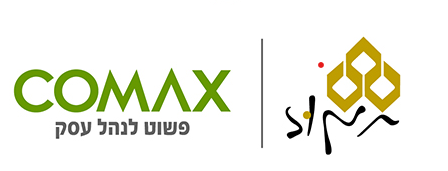Managing a jewelry store requires a high level of coordination between different elements of the business – from product inventory to customer relations. The manager must deal with unique challenges stemming from the complexity of the products, diverse designs, and unique customer requirements. In such a reality, an advanced computerized management system becomes an essential tool that streamlines processes and simplifies ongoing management.
Challenges in Managing a Jewelry Store
- Diverse and Complex Inventory: Jewelry stores offer a wide range of unique items, each with different value and unique characteristics – from gold jewelry to rare gemstones. Managing inventory manually can be complex and prone to errors. The manager must ensure that each item is added, sold, or transferred to inventory in an organized and accurate manner.
- Tracking Sales and Profitability: In jewelry stores, product prices can vary according to the market, and additionally, products may take longer to sell compared to other products. It’s important to track each sale, analyze profitability, and ensure that inventory doesn’t consist of slow-selling products.
- Customer Service: Customers who come to jewelry stores usually expect personal and professional service. Creating a pleasant shopping experience can affect the success of the business, so it’s important that the manager can track each customer, know their preferences, and respond to changing needs in real-time.
Using a Management System for Jewelry Stores The computerized system has become a key tool in the jewelry business. It’s a system that provides a complete picture of all business information and helps the manager make informed and correct decisions in every area:
- Smart Inventory Management: An advanced management system allows not only tracking inventory details but also alerting about items that are missing or about to run out. In this way, excess inventory or shortage of popular products can be avoided.
- Targeted Marketing: Through the system, data on previous customer purchases can be collected to offer them jewelry that suits their personal preferences. For example, if a customer previously purchased a diamond ring, they can be sent an offer to purchase a matching necklace or additional jewelry from the new collection.
- Real-time Reporting: The system provides accurate and updated data on sales, expenses, and profits. This allows the manager to make business decisions based on accurate data, prevent losses, and maximize profits.
- Customer Management: The system allows for retaining customer details, including purchase history and areas of interest. In this way, long-term relationships with customers can be developed, offering them personalized service that will lead to better results.
- Customer Service: A good management system allows store employees to communicate with customers efficiently. There is the possibility to return items, make special orders, or offer additional products as needed – all in a simple and organized manner.
Summary Today, managing a jewelry store requires advanced tools that help deal with daily challenges. A computerized management system not only improves the ability to track inventory and sales but also provides a competitive advantage by enabling personalized service and streamlining business processes. The use of technology is not just an advantage but a necessary requirement for the success of the store in a competitive and changing world.




